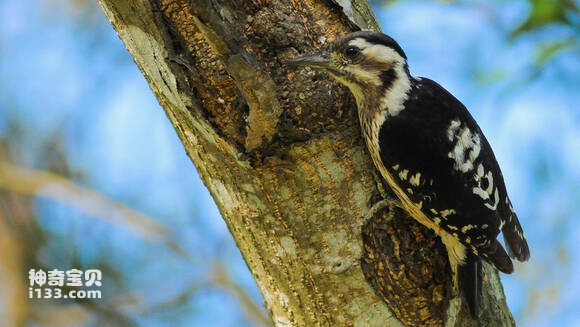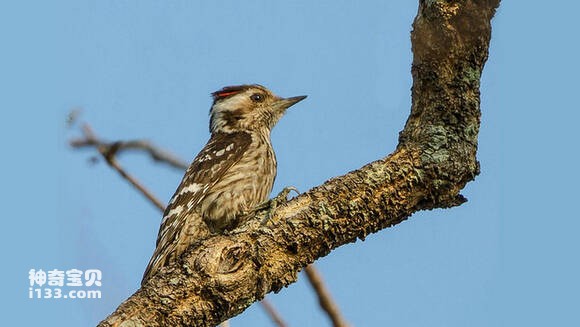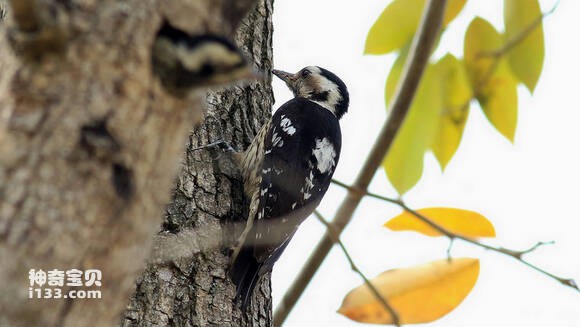Yungipicus canicapillus
IUCN
LCBasic Information
Scientific classification
- name:Yungipicus canicapillus
- Scientific Name:Yungipicus canicapillus,Grey-capped Pygmy Woodpecker
- Outline:Climbing birds
- Family:
Vital signs
- length:14-17cm
- Weight:20-30g
- lifetime:No textual research information is available
Feature
Distribution and Habitat
Star-headed Woodpecker is found in southeastern Heilongjiang, Changbai Mountain of Jilin, southern Liaoning, Hebei, Shanxi, Gansu, Shandong, Henan, Jiangsu, Anhui, Hubei, Zhejiang, Hunan, Sichuan, Guizhou, Yunnan, Guangxi, Guangdong, Fujian, Taiwan and Hainan Island. Outside China it is found in India, Burma, the Malay Peninsula and Indonesia.
Star-headed woodpecker mainly inhabits in mountain and plain broad-leaved forests, mixed coniferous broad-leaved forests and coniferous forests, but also appears in mixed wood forests and secondary forests, and even appears in village edges and scattered trees in cultivated land. The altitude of distribution can reach more than 2500 meters.
Appearance
The male's forehead and head are dark gray or grayish brown, sometimes tinged with light tan, the nose feathers and eyes are grayish white first, and the brow lines are broad and white, extending from the upper margin behind the eyes to the side of the neck, where white patches form. There is a small red spot on both sides of the occipital. Ear cover light brown. Black pillow, nape, upper back and shoulders; Lower back and waist white with black markings; The overlying and central tail feathers are black, the outer tail feathers are dirty white or brownish white, with black stripes, and some stripes are fuzzy and not obvious; The grabbing and flying feathers on the wings are black, the middle and large overlying feathers have broad white end spots, and the inner and outer webs of the flying feathers have white spots. Collar line white or dark grayish-brown, head and neck side brown; There is a dark spot behind the ear cover. Cheek, throat white or gray white, the rest of the lower
Details
The starheaded Woodpecker, Yungipicus canicapillus and Grey-capped Pygmy Woodpecker, has 15 subspecies.
Star-headed woodpeckers often live alone or in pairs, only appearing in family groups after the nest with young. Most of the activities and feeding in the upper part of the tree, but also occasionally to the ground and trees on the stump to feed. Flying fast, in a wave. It feeds mainly on longiceps, silverfish, ants, bug Elephants-Are-Endangered.html">elephants, golden-flower worms, beetles, and other coleoptera and lepidoptera insects, and occasionally on plant fruits and seeds. The cry is a sharp trill。

The breeding season of the star-headed woodpecker is from April to June. In mid-to-late March, they began to pair up and chase each other, flying and Shouting. The nest is on the rotten trunk of the heartwood, the nest is higher, and the height from the ground is generally 3-15 meters. Both male and female birds peck at the nest hole. The hole is round, the diameter is 4.2-4.5 cm, the inner diameter of the hole is 11-12 cm, and there is no inner cushion in the hole. Each clutch lays 4-5 eggs, the eggs are white, oval, the size of 18-21 mm ×13-15 mm, male and female birds take turns incubating eggs, incubation period 12-13 days. Young birds are late sex.

It was included in the List of Beneficial Terrestrial Wildlife under State Protection or of Important economic and scientific research Value issued by the State Forestry Administration of China on August 1, 2000.
Listed on the International Union for Conservation of Nature (IUCN) 2012 Red List of Threatened Species ver 3.1 - Not Threatened (LC).
Protect wild animals and eliminate wild meat.
Maintaining ecological balance is everyone's responsibility!








